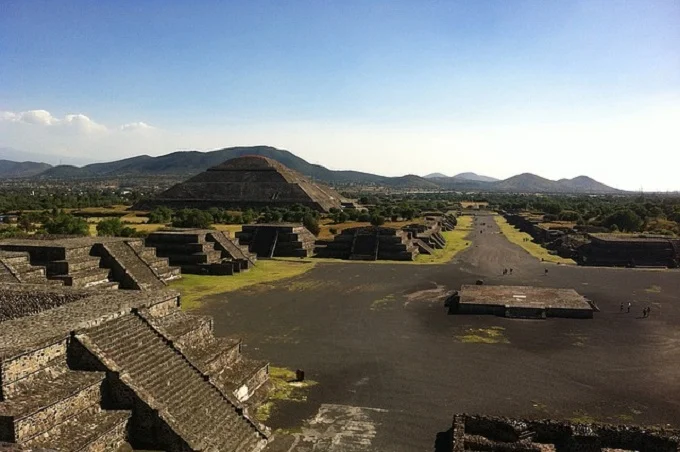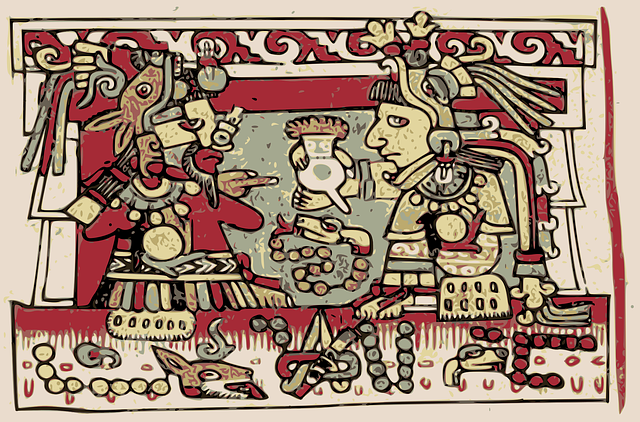Harsh manners and delicious food: what was the life of the Aztecs

In popular culture, the Aztecs are less well-known than the Maya, who reportedly foretold the world’s end as early as 2012. However, when you learn more about their culture, you’ll realize that these Native Americans are much more unique than their neighbors.
The Aztec Empire crumbled under the assault of tiny but superior military technology, detachments of conquistadors headed by Hernan Cortes, with an estimated 15 million people at the beginning of the 16th century and having conquered practically all of its neighbors surrounding it.
But now, we’d want to discuss the Native Americans’ lives and traditions, whom most people remember that they sacrificed people and tossed them from pyramids.
The Aztecs fought wars for slaves and prisoners of war in order to sacrifice them
Aztec mythology has ruthless gods that punish their victims for any wrongdoing. The Aztecs sacrificed humans to satisfy the gods. However, the Aztecs often invaded weaker neighbors to capture as many people as possible since they did not wish to sacrifice their citizens. Some were sold into slavery, while others were sacrificed to the gods.
The Aztecs, Mayans, and other Central American peoples, for example, fought the so-called Flower Wars only to capture captives and sacrifice them. Furthermore, conflicts were conducted against vassals.
The Aztecs thought that sacrificing human blood and hearts to the gods would ensure that the sun would continue to rise in the sky, the moon would not descend to the ground, and the gods would not be enraged.

They had developed their trading and espionage skills
Even in such a harsh empire as the Aztec Empire, they recognized the need for commerce as a means of growth. Every city had marketplaces, and major urban regions had even larger market squares where items from other nations were purchased and sold. Because the Indians did not create wheels, professional traders-travelers – the post office – carried the products on their backs and the backs of their animals. They not only traded inside the empire, but they also went to neighboring nations and functioned as commercial mediators.
The post office was often used as spies by the empire’s or city-states’ governments, collecting information about the adversary subsequently used in ceremonial battles. While espionage was seen as degrading employment in Europe, with the Aztecs losing battles owing to a lack of intelligence, the Aztecs gathered information before the fight and attacked the enemy’s weakest places.
They had a universal education system in place
Aztec children were all educated. People were separated into groups and instructed to execute certain activities based on their social standing, gender, age, and other characteristics.
All children were homeschooled by their parents until they were around 12-13 years old. The aristocratic lads then proceeded to school, where they learned to sprint, leap, wrestle with weapons, and study laws and religion. They emerged as officials, scientists, professors, or priests from the school’s walls. Low-birth-weight boys were sent to a different school to learn agriculture and martial skills. Household, craft, dance, and singing were among the subjects studied by the girls. After graduating from high school, the majority of them became housewives.
Religious ceremonies and legislation were taught in all schools, regardless of gender or social background. If the student has a natural aptitude for these studies, he may pursue a career as a priest or healer.
They were entertained in a pleasant and relaxing manner

Contrary to popular opinion, the Aztecs were ruthless people whose only form of recreation was basketball, after which the losing team was sacrificed. Board games, dancing, singing, and even gambling were popular among the Aztecs. They also enjoyed themselves quietly, playing musical instruments such as drums and flutes.
The Aztecs did have a ball game that culminated in a sacrificial sacrifice. However, it was a religious celebration not meant to be fun but rather a serious attempt to satisfy the gods. Strange and brutal sports were practiced by the Aztecs and by people worldwide.
The Aztecs ate a wide variety of foods
The Aztecs’ food was diverse. They planted beans, pumpkin, tomatoes, potatoes, avocados, chili peppers, and wild fruits, berries, and nuts in addition to corn. The general people mainly were vegetarians, whereas nobles were permitted to consume meat and fish.
Also, the diet of all segments of the population included a variety of insects, which are plentiful in Central America’s rainforests. Due to its high protein content, what we now consider repulsive, such as large bug larvae, was a delightful and nourishing treat for the Aztecs.
They had established agriculture
In films, how are the Aztecs depicted? Only the spear could create loincloths for savages. For example, they recognized the necessity of soil fertilization and even built floating islands known as chinampas. The Aztecs did this by driving piles into the marshy lowlands’ soil, connecting them with wicker, and then covering them with a layer of dirt.

During the rainy season, chinampas transformed into islands that were regularly nourished with organic matter from reservoirs, making the area fruitful and allowing for the harvesting of many crops each year. The Aztecs also dug water canals leading to the fields.
The Aztecs used two calendars to keep track of time

The first calendar was bright and sunny. The year was split into 18 months and had 365 days. Nature’s signs and numbers were used to designate the days. There were 360 named days and 5 days without a name and numbers, which were unfortunate.
The second calendar was 260 days long and was used for religious purposes. According to the ceremonial calendar, all religious rites, conflicts, and other events were meticulously planned and carried out. A new cycle started when the calendars aligned every 52 years, complete with additional rituals and sacrifices.
The Aztecs were hygienic
The conquistadors made accusations about the Indians being filthy barbarians. The Aztecs, on the other hand, delighted in bathing in reservoirs and baths, believing that the latter cleansed the body and mind and also served as a cure for a variety of ailments. We may certainly state that the Aztecs were correct in this aspect after many centuries.
They condemned adultery
There were no exceptions for men or women in the Aztec Empire when it came to adultery. A man can marry many women under the law, but only according to the marriage ceremony. Only the first marriage’s offspring were acknowledged as heirs. A man had to treat all of his wives equally and fairly simultaneously.
In terms of infidelity, any female adultery resulted in death, while male infidelity resulted in death if a man cheated on a married lady.
.




